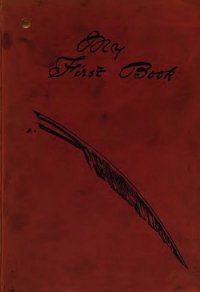Operation Nemesis: The Assassination Plot that Avenged the Armenian Genocide - Bogosian Eric (мир книг .txt) 📗
The apogee of imperial Ottoman glory was achieved by Suleiman “the Magnificent” almost one hundred years after Mehmed the Conqueror took Constantinople. Suleiman was a sultan of immense authority who successfully led armies against Europe until his advance was checked at the Siege of Vienna in 1529. In this way, the Ottomans took control of most of eastern Europe as well as all of Arabia and North Africa up to, but not including, Morocco. This Muslim imperium was populated by Turks as well as Slavic speakers of the Balkans.14 The peoples of the empire also included Christian Greeks, Armenians, and Assyrians as well as Jewish refugees from the Inquisition in Spain. Perhaps the most remarkable thing about the Ottoman system was how successfully it incorporated the conquered peoples into its highest levels, enriching its cultural infrastructure. A slave girl from the most remote corner of the empire could become mother to a sultan. A Christian Bosnian could rise up through the ranks to the position of Grand Vizier.15

In the sixteenth century, the Ottoman Empire under Sultan Suleiman the Magnificent reached its apogee. At its peak, the empire controlled most of the Middle East, Greece, the Balkans, Asia Minor, and North Africa.
In the first centuries of the Ottoman Empire, Europeans had little contact with its people except during warfare or on the high seas. Europeans referred to them as “Musselmen” and erroneously regarded them as descendants of the ultra-violent Mongol Tamurlane. The Ottomans appeared, in the European imagination, as caricatures—hookah-smoking outlaws who abducted women into their harems, castrated young boys, or enslaved the crews of captured ships. Westerners pictured the Ottomans perched on pillows, ogling their odalisques while devouring roasted meat off skewers. (In fact, European traders introduced tobacco to the Ottomans. Muslim mullahs forbade its use, to no avail. The clerics labeled tobacco, wine, coffee, and opium as “the four legs of the couch of satan.”)16 The West indulged itself with fantasies of decadent sultans who wasted their days in lavish, cloistered extravagance. (Some did.) But this was a cartoonish view of an impressive civilization. Suleiman, the longest-reigning sultan, was intelligent and brave, instituting vast reforms in law, taxation, and education. A great patron of the arts, Suleiman oversaw the golden age of Ottoman architecture. His court was as complex and as sophisticated as any in Europe.
By the time Mozart was composing his opera The Abduction from the Seraglio (1782), set in an Ottoman harem, the “otherness” of the Ottomans had totally captivated the European imagination. The artists and storytellers of Europe expanded vague hearsay about the sultan’s court into lush fantasies filled with naked slave girls and fierce eunuchs. Could there be a greater nightmare than getting caught by a Turk and being enslaved in his seraglio? The “Lustful Turk” represented the ultimate unfettered degenerate, a sadistic satyr with an enormous sexual appetite (and genitals), who would as soon drink blood as eat.
Ironically, in the middle of the sixteenth century, as the Ottomans were reaching their imperial apex under Suleiman, European kingdoms continued to fight tooth and nail amongst themselves. The advantage shifted from the Spanish to the English to the French to Hapsburg monarchs, with Russia waiting in the wings. The wars between the kingdoms were long and bloody. (Among the dozens of wars fought before, during, and after the European Renaissance were the Thirty Years’ War, the Napoleonic Wars, and Britain’s war with its North American colonies.) For over a hundred years, as Europeans wasted energy on hostilities, the Ottoman Empire loomed like a massive wall at one end of the continent, an enigmatic foe constantly threatening invasion. The Ottomans had been stopped at Vienna, but for how long?
With the discovery of “the New World,” Europe fortified itself with plundered gold and silver, and the Ottoman Empire, laboring under its immense size, peaked. The Ottomans had no access to the treasure from across the Atlantic that was transforming Europe from a cluster of warring principalities into an interlocking quilt of very wealthy kingdoms. Moreover, Europeans were inventing new ways of utilizing their newfound wealth, as modern banking and transnational corporations superseded the outmoded feudal economic system. The Industrial Revolution dawned and manufacturing exploded, making Europe dominant in the art of war. The Ottomans, by contrast, remained mired in the old ways, leaving themselves at a distinct disadvantage. The Europeans used their money to construct fast ships and powerful new means of warfare, making the seemingly insuperable Ottoman armies vulnerable, and ultimately obsolete. As the empire loosened its grip on its vast territories, the balance of power shifted. Europe could now shove back at the formidable Turks.
What distinguished the Ottomans culturally from their contemporaries in Europe was not just their religious identity but their complex traditions and institutions, evolved over hundreds of years. Though the empire was ruled by a sultan who in almost every way seemingly paralleled the position of emperor, the similarities were in appearance only. Dynasties were forged in the harem in a manner completely unlike the system of primogeniture common in the West. The Ottoman military, heir to the Seljuk system, was from its earliest years organized in a unique fashion that made it fearsome. Finally and significantly as far as the history of the Armenians is concerned, religious minorities were tolerated under what was called the millet system, in contrast to the violent suppression of “heretics” common in Europe.
The sultan was not only the supreme political ruler; he was also caliph, leader of the Islamic world, the “shadow of God on earth” (in Arabic, zill Allah fi’l-alem),17 and thus the entire empire belonged to him. Every ounce of gold, every acre, every slave was his property. Some of the highest dignitaries were legally his slaves. The first sultans were ghazis, warrior sultans who led their armies into battle. The sultan as caliph symbolically reigned beyond the borders of his empire: he was the leader of all Muslims, whether living as Ottomans or not.
In the Ottoman Empire, power flowed to the unknowable center. This was where the sultan held court and lived. There are almost no first-person accounts of the earliest sultans because few individuals were actually allowed to be in the royal presence—certainly not Westerners or anyone who might write a memoir. Sultans avoided appearing in public; in governmental meetings they would often be hidden behind a screen. With the sultan secreted away, others could establish bases of power within the complex bureaucracy of the palace and the Sublime Porte, the functional Ottoman government, run by the Grand Vizier, who was often the true head of the empire.
At the height of Ottoman power, the palace of the sultan was Topkapi Sarayi (visited today every year by thousands of tourists). The palace housed the royal entourage, including the royal harem, for hundreds of years. Later the royal residence would move to the more European-styled Dolmabahce. Finally, Sultan Abdul Hamid II would move the palace once again, to Yildiz, in an effort to make his residence more secure.
The Islamic view that divided the world into the House of War and the House of Islam made war making a primary function of government. With a permanent state of war as its foundation, the Ottoman culture was defined by a militaristic spirit. In the early years of the empire, the most exalted legions of the Ottoman military were the Janissaries (from yeni ceri, meaning in Turkish “new force”). These were crack military units composed mostly of Christian youths harvested from villages of the realm, usually in eastern Europe. In a cycle of three, five, or seven years, emissaries from Constantinople would visit these outlying villages, particularly in Christian Bosnia. The most attractive teenagers were collected under the process of devshirme, often with the consent of their families, because to be invited into the sultanic milieu was a great honor and opportunity. These young men were converted to Islam and divided into units for intensive training. Some were sent to work in the countryside to develop their physical strength. Others were transported directly to Constantinople to work in the palace. The most impressive candidates were selected to enter the elite military devoted to the sultan, the Janissaries.




